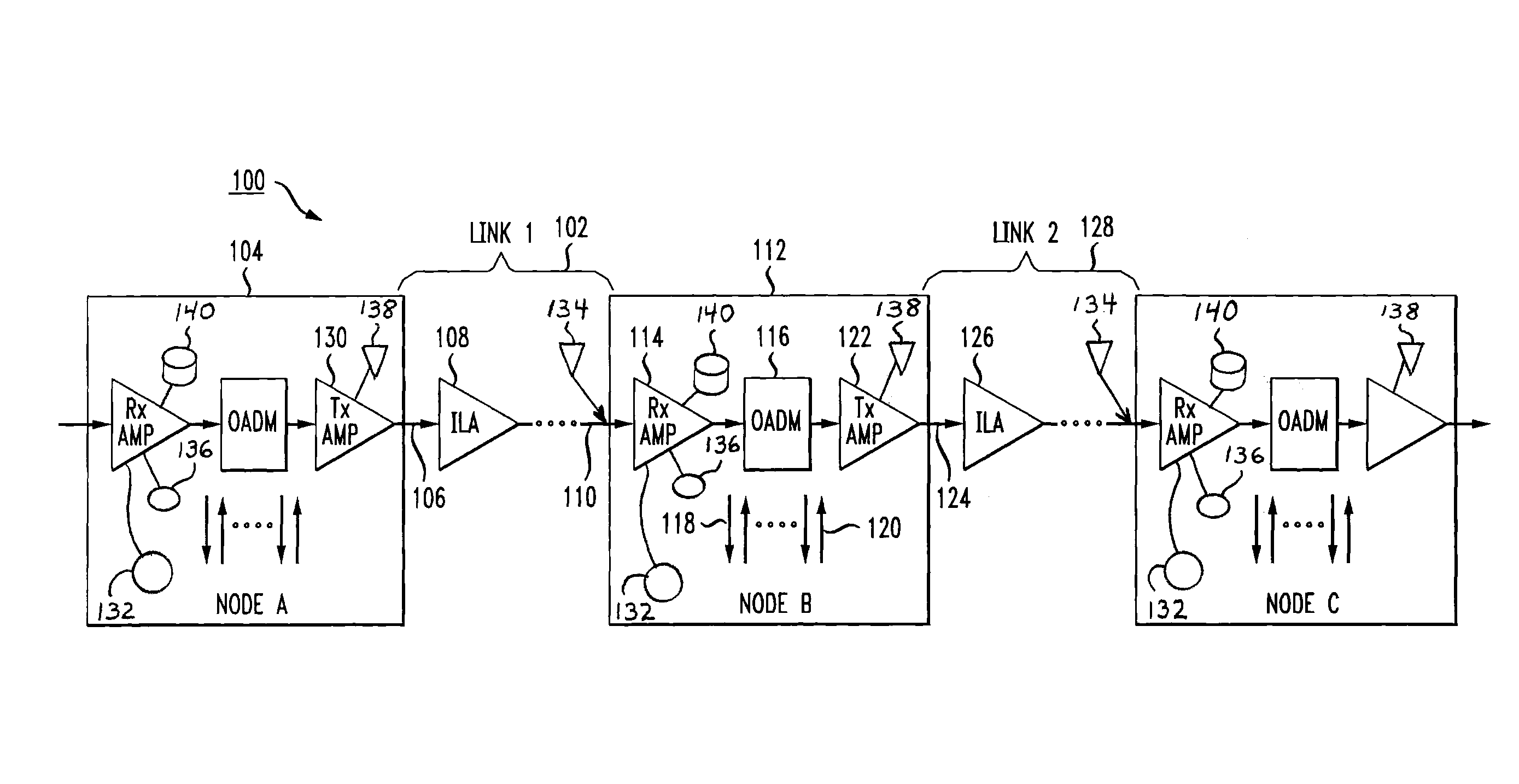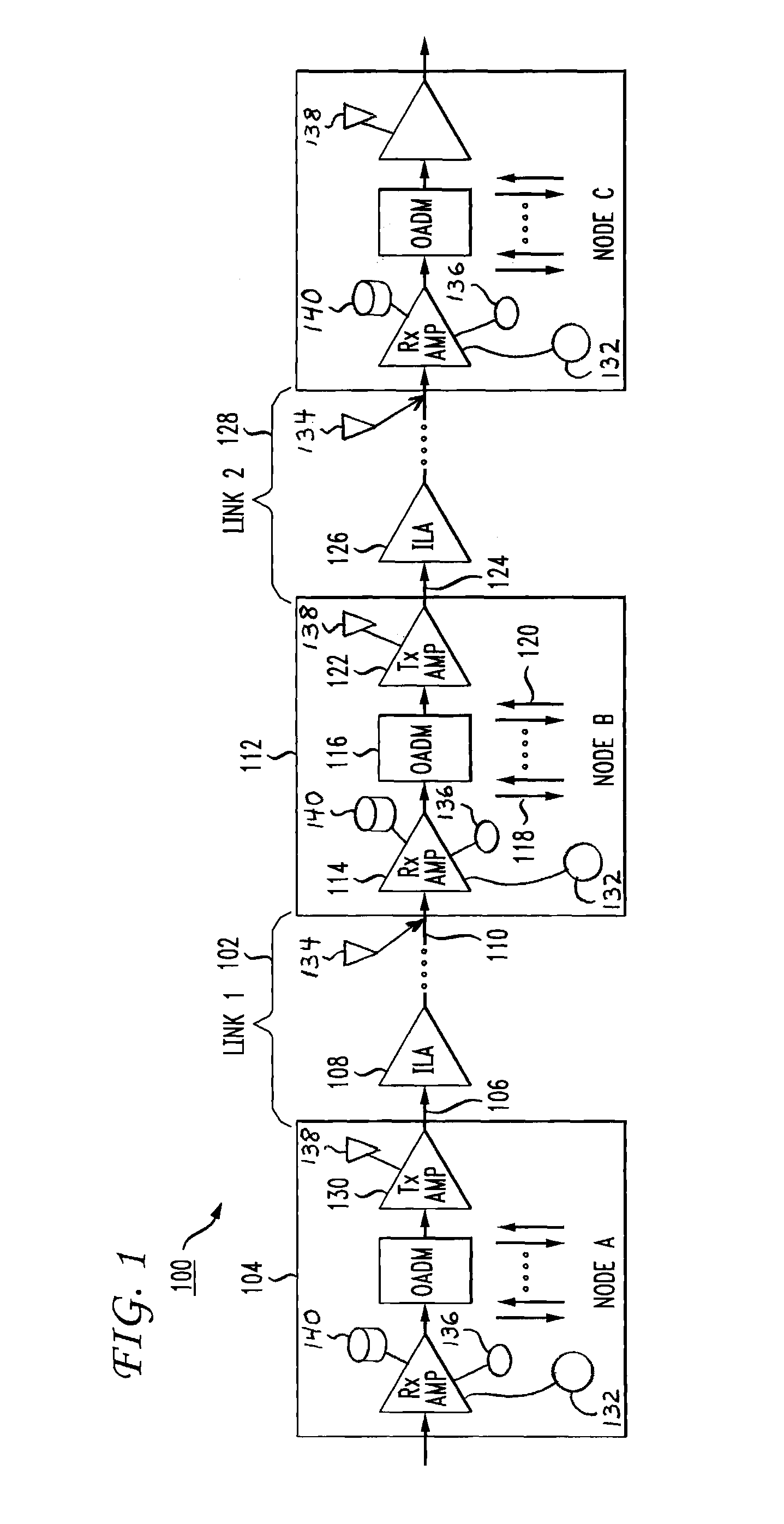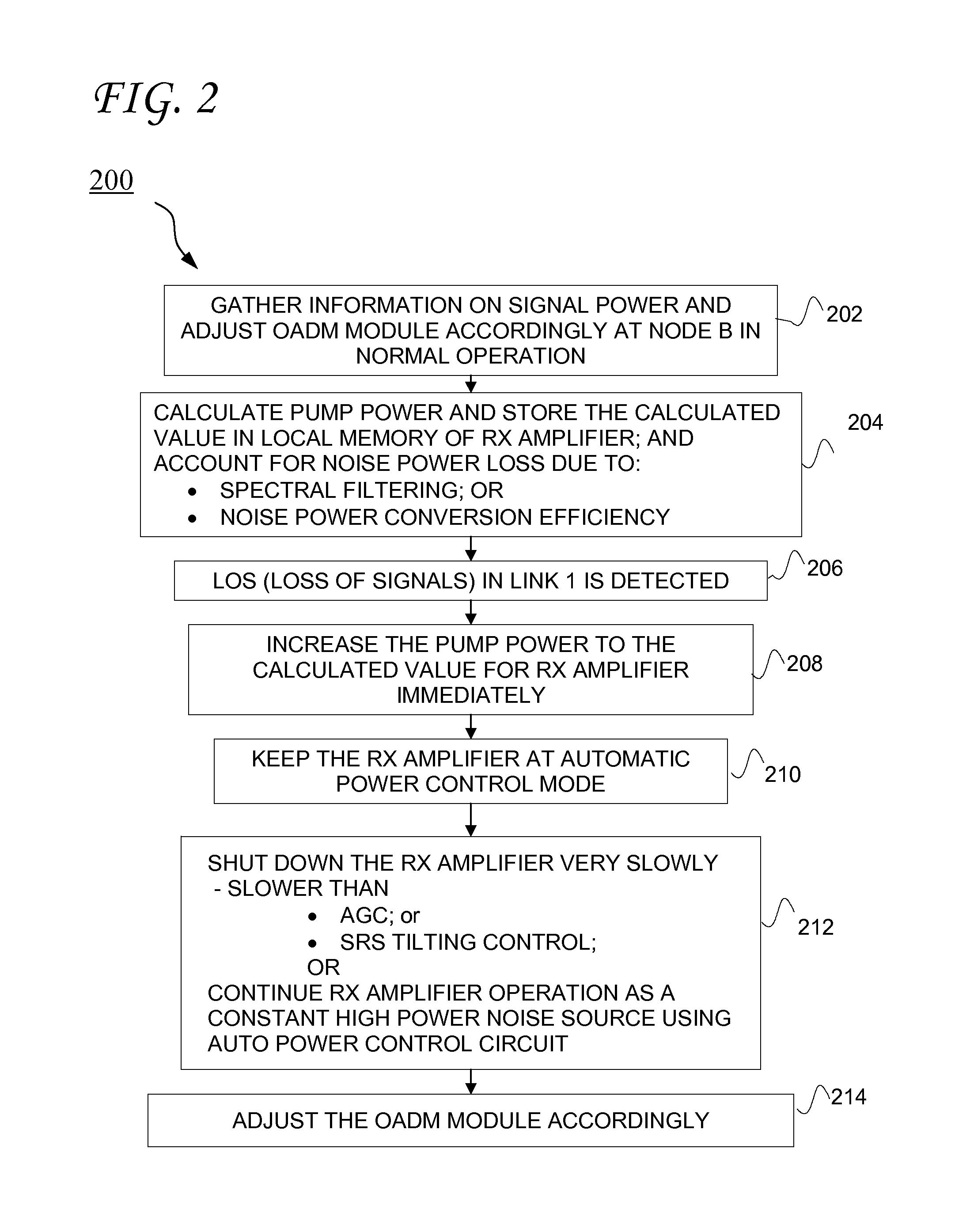Transient control solution for optical networks
a technology of optical networks and transient effects, applied in the field of high-speed optical telecommunication networks, can solve the problems of transient effect, adverse effects downstream, slow response time,
- Summary
- Abstract
- Description
- Claims
- Application Information
AI Technical Summary
Benefits of technology
Problems solved by technology
Method used
Image
Examples
Embodiment Construction
[0031]FIG. 1 shows two links and three nodes of an optically amplified wavelength division multiplexing (WDM) network 100 in accordance with the present invention. A node, also referred to as an optical add / drop multiplexing (OADM) node includes at least one receiver amplifier, an OADM module, and at least one transmitter amplifier. A link according to the present invention includes an optical fiber connecting two nodes and may include in-line optical amplifiers. Only one direction is depicted in FIG. 1 and each of the nodes shown represents a simple two-degree optical add / drop multiplexing (OADM) in one embodiment of the present invention.
[0032]Each optical channel in the WDM network is centered at a particular wavelength. The OADM module operates to drop, pass through, or add a channel according to its corresponding wavelength, or equivalently, its optical frequency. For example, for a channelized OADM with channel spacing of about 50 GHz, the corresponding bandwidth could be abou...
PUM
 Login to View More
Login to View More Abstract
Description
Claims
Application Information
 Login to View More
Login to View More - R&D
- Intellectual Property
- Life Sciences
- Materials
- Tech Scout
- Unparalleled Data Quality
- Higher Quality Content
- 60% Fewer Hallucinations
Browse by: Latest US Patents, China's latest patents, Technical Efficacy Thesaurus, Application Domain, Technology Topic, Popular Technical Reports.
© 2025 PatSnap. All rights reserved.Legal|Privacy policy|Modern Slavery Act Transparency Statement|Sitemap|About US| Contact US: help@patsnap.com



